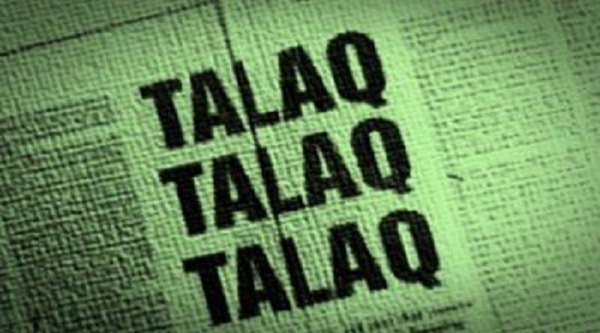This article is written by Diganth Raj Sehgal, Student, School of Law, Christ University, Bangalore. The author in this article has discussed the concept of Triple talaq and the validity of the judgment regarding the same.

Introduction
Triple talaq is the practice under which a Muslim man can divorce his wife by uttering “talaq” three times. It is commonly seen among India’s Muslim community, majority of whom follow the Hanafi Islamic School of thought. This mode of divorce is not universal among Muslims across the globe, as many other Islamic schools of thought prefer the divorce to be deferred, in many cases over a period of three months.
With the advent of technology, the concept of triple talaq became easier to execute. There were several cases reported about husbands sending messages or voice notes or even pictures over snapchat to utter talaq and divorce their wives. Before the Shayara Bano judgment, several cases were brought before the courts to solve this matter. The right of such a divorce was without any reasonable grounds and was vested only with the husband which made the wives silent victims. Thus on these ground, the constitutionality of such a practice in India was challenged.
The judgment in Shayara Bano vs Union Of India And Ors., on contrary to common belief, does not change the legal position of Instant Triple Talaq that existed before, but rather creates confusion on the constitutional status of personal law, and misses a great opportunity to elaborate on the constitutional vision of justice for women from minority religious groups. The Supreme Court’s judgment in the present case has been described by many commentators as the Court declaring the practice of instant triple talaq that is talaq-i-biddat (or divorce, hereinafter ITT) to be “unconstitutional”.
Such a description of the judgment is incorrect. The judgment is made up of three separate opinions: one by Chief Justice Jagdish S Khehar and Justice S Abdul Nazeer; one by Justice Kurian Thomas; and one by Justices Rohinton F Nariman and Uday U Lalit. The three opinions concur on some issues and differ on others. This makes the task of figuring out the judgment’s exact holding a difficult and confusing exercise. Carefully tracing the convergences and divergences leads one to conclude that the majority faulted ITT and “set it aside” not because it was found to be unconstitutional, but rather on the grounds that it was un-Islamic. What is more, even with a five-judge bench decision, the constitutional status of personal law remains as uncertain as before, which makes the prospects of any future attempt to change discriminatory personal law provisions by challenging their constitutional validity, difficult.
Background
To go over the facts briefly, Shayara Bano, a woman survivor of domestic violence and dowry harassment had been unilaterally divorced through ITT. She filed a petition before the Supreme Court seeking a declaration that the practices of ITT, polygamy, and Nikah Halala in Muslim personal law were illegal, unconstitutional, and in violation of Articles 14 (equality before law), 15 (non-discrimination), 21 (right to life with dignity) and 25 (right to freedom of conscience and religion) of the Indian Constitution. The Court however chose to examine the issue of ITT alone.
The Union of India supported the petition. Among the others who intervened in this case, the All India Muslim Personal Law Board and the Jamiat Ulema-e-Hind argued that the Court did not have jurisdiction to entertain a constitutional challenge to Muslim personal law and that the matter was in the domain of the legislature. The Bebaak Collective and the Centre for Study of Society and Secularism were the two organisations working with Muslim women which supported the petition and urged the Court to declare that personal law was subject to the Fundamental Rights.
Bharatiya Muslim Mahila Andolan and Majlis, other women’s rights organisations – argued that in view of previous decisions of the Court, the bench need not consider the question of the constitutional validity of ITT, but should rather emphasise the existing legal remedies.
As has been pointed out by many commentators throughout the course of this case, ITT lacked legal validity even before this petition was filed, though it had not been declared “unconstitutional” by any court. Since the 1980s, a number of high courts had held that for talaq to be valid, it must be pronounced for a reasonable cause, and must be preceded by attempts at reconciliation facilitated by mediators representing both parties. On this view, though widely invoked by husbands and authorised by the clerics, ITT was already illegal.

The issue goes back to a 1951 Bombay High Court judgment in the case, State of Bombay v Narasu Appa Mali (1952), where a two-judge bench had held that personal law was not covered by the phrase “laws in force” used by the Constitution in Article 13 to denote all those pre-constitutional enactments which were “in force” at the time of adopting the Constitution, and which were subject to the Fundamental Rights. The two judges held that this was because the source of personal law was a religion rather than the state. The foundations of this judgment have been criticised by eminent legal scholars like H.M. Seervai (2015) and A M Bhattacharjee (2016). Several high court benches have also called for its reconsideration. The Supreme Court affirmed it in the 1980 judgment Sri Krishna Singh v. Mathura Ahir (1980), then implicitly overturned it in the 1996 judgment C Masilamani Mudaliar and Others v. The Idol of Swaminathaswaminathaswami Thirukoil (1997) and then upheld it again in the 1997 judgment Ahmedabad Women’s Action Group v. Union of India (1997). Thus, Shayara Bano’s case was important not just for how the Court decided her immediate claims, but also because it offered an opportunity for a five-judge bench of the Supreme Court to clarify the constitutional status of personal law.
Religious backing of Triple Talaq
The two two-judge opinions in the Shayara Bano case take diametrically opposite approaches to the question of constitutionality. Justice Khehar’s opinion to which Justice Nazeer joins, takes the view that those parts of Muslim personal law on which the state has enacted a law, such as the Dissolution of Muslim Marriage Act, 1939 or the Muslim Women’s (Protection of Rights on Divorce) Act, 1986 – can be tested for compliance with the Fundamental Rights, but those parts that were uncodified cannot be. He bases this on the view that the Muslim Personal Law (Shariat) Application Act, 1937, which provided that Shariat was the only law applicable to the Muslims and not customary law, had a limited purpose. That limited purpose, according to Khehar, was to only state that customary law was not applicable to the Muslims in matters of marriage, divorce, inheritance, and so on. The 1937 Act did not automatically bring the uncodified part of Muslim personal law within the state’s jurisdiction, and as a result, it did not come within the phrase “laws in force” in Article 13 of the Constitution.
Thus, Khehar affirms Narasu judgment. Although the Union of India had urged that the judgment should be reconsidered, Khehar refrains from doing so, stating that the bench cannot do this as it had been upheld earlier by Supreme Court benches of the same strength. This is incorrect, as both the instances where Narasu was upheld were two-judge benches. Khehar further immunised Muslim personal law from constitutional challenge by holding that it is protected as a matter of religious freedom under Article 25.
Specifically, on ITT, the judge holds that it had been practised by the Sunni community for centuries, which made it part of their religious faith and was protected from interference by the Court. Curiously, in framing the issue thus, he gives up his earlier distinction between codified and uncodified laws and goes on to hold the entire category of personal law to be immune from constitutional challenge. He concludes that only the state can bring changes in the domain of personal law through legislation within permissible limits of Article 25 and trump the interest of religious freedom. Justices Khehar and Nazeer, therefore, deny the petition and direct the state to legislate on the issue within six months.
The arbitrariness of Triple Talaq
Justices Nariman’s opinion with which Justice Lalit concurs goes in the opposite direction. Nariman takes the view that the function performed by the 1937 Act was not only to abrogate the application of customary law to Muslims. It also performed a positive function, in that it also provided what was the applicable law. The entity “Muslim personal law” according to on this view, was brought into existence by the state in exercise of its civil authority, which brought it squarely within the phrase “laws in force” in Article 13. Thus, according to Nariman, even uncodified Muslim personal law can be tested for compliance with the Fundamental Rights. The judge contradicts the rationale on which Narasu was based. Further, he sets aside an earlier two-judge bench decision of the Supreme Court that had relied on Narasu. But curiously, having rejected Narasu in both substance and application, he notes that the question of whether Narasu is still valid law should be examined in a “suitable case”.
The centrepiece of Justice Nariman’s opinion is the position that what is “manifestly arbitrary” is also unreasonable and can be struck down under Article 14, which is concerned with equality before the law and equal protection of the laws. Justice Nariman notes that ITT is an “irregular or heretical form of talaq” since though lawful, it is considered to be incurring the wrath of God. For him, the arbitrariness of IIT, when seen through the lens of constitutional reasoning, its arbitrariness is thrown into sharper focus. The judge concludes:
“…it is clear that this form of Talaq is manifestly arbitrary in the sense that the marital tie can be broken capriciously and whimsically by a Muslim man without any attempt at reconciliation so as to save it.” (Shayara Bano v Union of India 2017: para 57)
Thus, in Nariman’s analysis, the religion-based finding that ITT was irregular and sinful, coincided with the constitutional reasoning-based finding that ITT was manifestly arbitrary. Justices Nariman and Lalit, therefore, struck down the 1937 Act, to the extent that it recognised ITT.
Is Triple Talaq Un-Islamic?
Justice Joseph does not fully join either of the above positions but follows a different path. On the question of the nature of the 1937 Act, he agrees with Justice Khehar and disagrees with Justice Nariman. Thus, though he agrees with Justice Nariman’s view of arbitrariness as an appropriate test for Article 14, he holds that the 1937 Act cannot be subjected to it. But he disagrees with Justice Khehar too. Justice Khehar held against determining the validity of ITT by referring to the Hadiths, as he felt that it was beyond the judicial role and expertise. Justice Joseph, on the other hand, is of the opinion that the 1937 Act, having declared Shariat to be the law applicable to Muslims, had essentially left it to the judges to find out what the Shariat said on an issue. Therefore, leaving the question of constitutionality aside, what he pursues in his opinion is:
“…whether what is Quranically wrong can be legally right …. the simple question that needs to be answered in this case is only whether triple talaq has any legal sanctity.” (Shayara Bano v Union of India 2017: para 1)
His reading of the relevant verses leads him to conclude that;
“an attempt for reconciliation and if it succeeds, then revocation are the Quranic essential steps before talaq attains finality” (Shayara Bano v Union of India 2017: para 10).
This was the view adopted by a number of high courts since the 1980s and this was endorsed by the Supreme Court in Shamim Ara v State of UP in 2002. Further, between 2002 and 2017, a number of high court benches had relied on the Shamim Ara case and invalidated ITT. Thus, Justice Joseph disagrees with Justice Khehar on two more points: one, that Shamim Ara dealt with the valid procedure for talaq in general, but did not contain a rule on ITT and two, that ITT was integral to the religious faith of the Muslims.
On the first, he notes that Shamim Ara had effectively invalidated ITT, though it did not say it in so many words. On the second issue, he notes that since the purpose of the 1937 Act was to abolish customs that were contrary to Shariat and ITT was contrary to the Quranic tenets, it was abolished by the 1937 Act. Hence, it could not be said to be an integral part of the Muslim faith and could not be immunised by resorting to Article 25. Here, he again disagrees with Justice Nariman, who held that the 1937 Act authorised ITT. Justice Joseph reiterates that the Shamim Ara judgment be upheld and finds ITT to be lacking legal validity, concluding,
“What is held to be bad in the Holy Quran cannot be good in Shariat and, in that sense, what is bad in theology is bad in law as well.” (Shayara Bano v Union of India 2017: para 26)
Conclusion
Having laid out the differences in the three opinions above, we find very few points on which a clear majority position emerges. Even when the judges agree on the outcome, they do so for different reasons. Justices Nariman and Lalit find ITT to be un-Islamic and unconstitutional. Justice Joseph does not go into the question of constitutionality but finds IIT to be un-Islamic and hence, invalid. Thus, by no means can it be concluded that in Shayara Bano case, the Court has declared ITT to be unconstitutional.
On the issue of the constitutional status of personal law, we find an utterly confusing judgment. Two judges hold at one point that uncodified personal law is beyond the scope of the Fundamental Rights, but following rather dubious logic, hold at a later point that the entire domain of personal law is protected as a matter of religious freedom, and they affirm Narasu. Two other judges hold personal law to be subject to the Fundamental Rights, but they do not explicitly set aside Narasu. One judge rejects the proposition that uncodified Muslim personal law can be tested against Fundamental Rights, rejects that it is protected by religious freedom, acknowledges the ghost of Narasu, but avoids the issue altogether. Arguably, Justice Joseph’s approach to the problem shows that it could have been tackled even without a constitutional challenge. But since the petitioners had raised the issue of constitutionality, the judges could have addressed the issue more thoughtfully.
In the final analysis, the judgment in Shayara Bano does not change the legal position of ITT that existed before, but creates confusion on the constitutional status of personal law and misses a great opportunity to elaborate on the constitutional vision of justice for women from minority religious groups.
 Serato DJ Crack 2025Serato DJ PRO Crack
Serato DJ Crack 2025Serato DJ PRO Crack










 Allow notifications
Allow notifications



